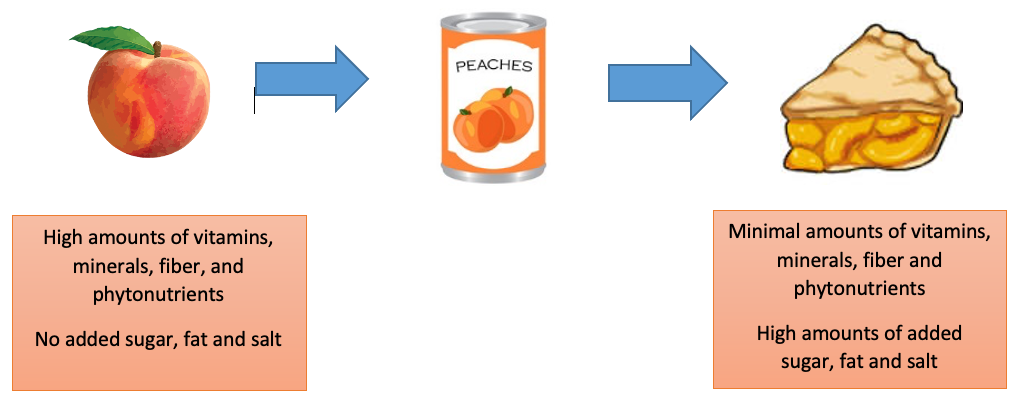Often we think of processed foods as lacking any nutritional value. But are all processed foods “bad”? Can there be a place for these foods in our diet?
First, it is important to know what qualifies as a processed food. According to the USDA, a processed food is defined as:
“any raw agricultural commodity subjected to washing, cleaning, milling, cutting, chopping, heating, pasteurizing, blanching, cooking, canning, freezing, drying, dehydrating, mixing, packaging, or other procedures that alter the food from its natural state”
In other words, a processed food is any food that has been changed from its original form. This means practically all the food in our grocery stores is processed, including fresh fruit and veggies which may be rinsed and refrigerated.
Instead of asking if a food is processed, we should be asking “How processed is it?”
About processed foods
There are three main categories of processed foods:
Minimally processed foods
These foods differ very little from their original source. The ingredient list for these foods is typically short and will not contain added sugar, fat, and salt. Foods in this category include frozen fruit and vegetables, dried fruit, shelled nuts, grains such as rice and pasta, tofu, milk, and yogurt. These foods retain most if not all of their original nutritional value.
Processed foods
These products consist of minimally processed foods with added sugar, salt, fat, and/or starch. Examples of these foods include canned fruit and vegetables, canned tuna, salted nuts, and natural cheeses. The ingredient list will be slightly longer, though the first ingredient will typically be the original food. Ingredients are listed by weight, so the first ingredient makes up the largest portion of the product. For example, canned tuna will list tuna as the first ingredient followed by water and salt. It is important to note processed foods may still contribute to a nutrient-rich diet. The canning process may improve absorption of certain phytonutrients such as beta-carotene in canned pumpkin and lycopene in canned tomato products. These plant-based nutrients have been strongly associated with a lower risk of certain cancers.
Ultra-processed foods
These foods contain added sugar, salt, fat and/or starch as well as other ingredients such as artificial colors and flavorings and preservatives in order to increase shelf-life and make them tastier. These foods typically require minimal preparation and often cannot be recreated at home. The ingredient list will often be longer compared to processed foods. In some cases the original food will not be listed first. Examples of these foods include soft drinks, candy, ice cream, chips, cookies, cereals, some frozen meals, and luncheon meats. These foods are often higher in calories due to added sugar and fat. As a result they are often strongly linked with unwanted weight gain as well as conditions such as heart disease, diabetes, and cancer.
Processed foods and nutritional value
As you can see, processed foods actually exist along a spectrum. Less processed foods can still be part of a healthy diet. They may provide a way to eat nutrient rich foods while saving time and money. If you are unable to purchase fresh produce, frozen or canned produce can be a good alternative. For example you may add canned peaches that are packed in their own juice to your oatmeal or yogurt for a nice boost of antioxidants. You may also try adding low sodium canned beans to your soup or salad for more fiber and protein.
Remember, though, higher amounts of processing often results in reduced nutritional value. In the place of key nutrients such as vitamins, minerals and fiber, you may be consuming more sugar, fat and salt.
